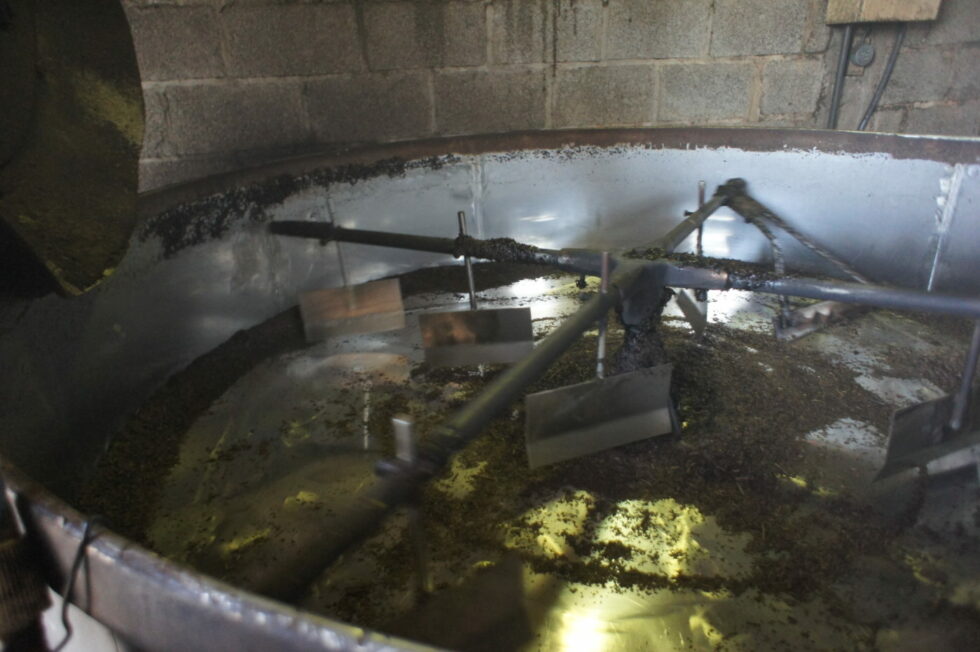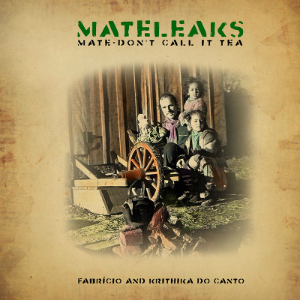Although it can also be prepared in a french press or an espresso machine, the similarities between Meta Mate 42 and coffee go beyond the fact that they share the same color.
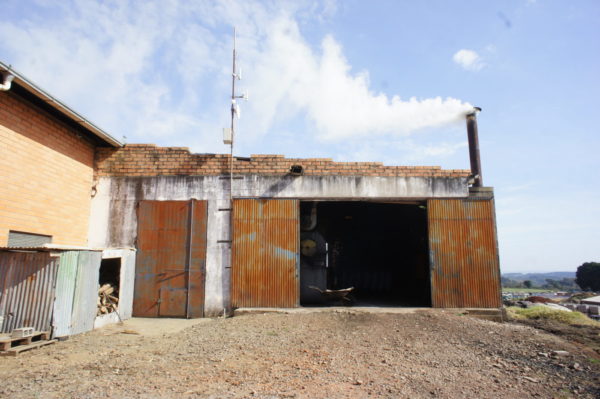
The Roasting factory
In order to see how this mate is prepared we travelled to Machadinho, a town known for it’s thermal springs on the border of Rio Grande do Sul and Santa Catarina, where Barao has a second production facility dedicated towards milling leafy mates like 23, aging others for export and for roasting mates like Meta Mate 42.
Tonnes of Mate is stored at the warehouse for aging for export

The Mate is separated according to the various grades and stored for aging.
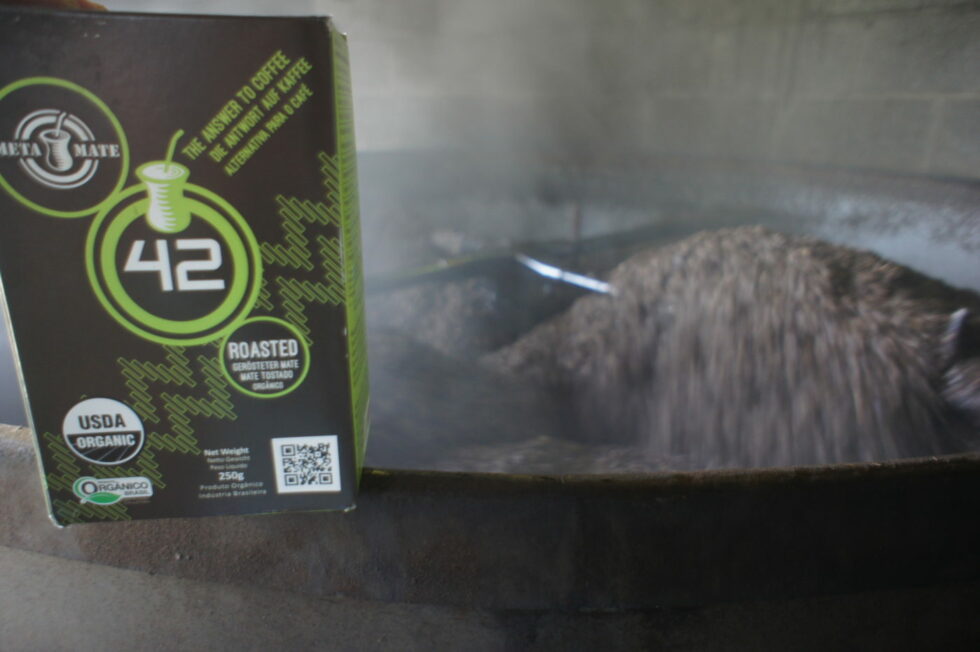
23 + 19 = 42. This is more than just a mathematical equation. It takes about 19 minutes to convert Meta Mate 23 into Meta Mate 42
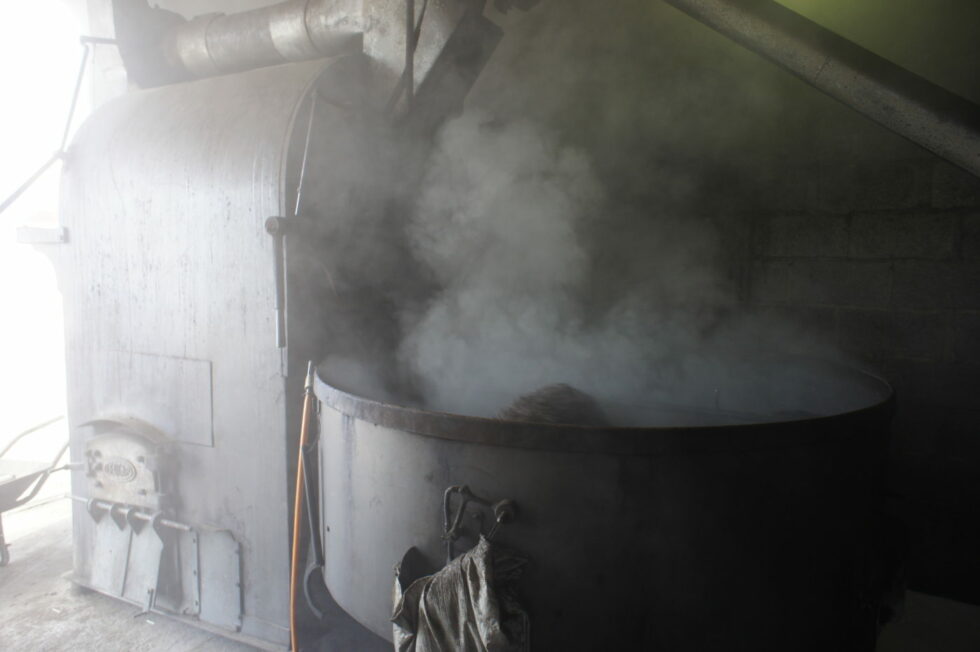
Mate’s answer to coffee is roasted for 19 minutes in an ancient coffee roaster at very high temperatures to convert it’s fresh grassy flavors to malty nutty notes.
In comparison to the grand production of their green mates, the mate roasting process has an artisanal nuance to it. Barao produces about 50,000kg roasted mate a year (less than 1% of their annual production).
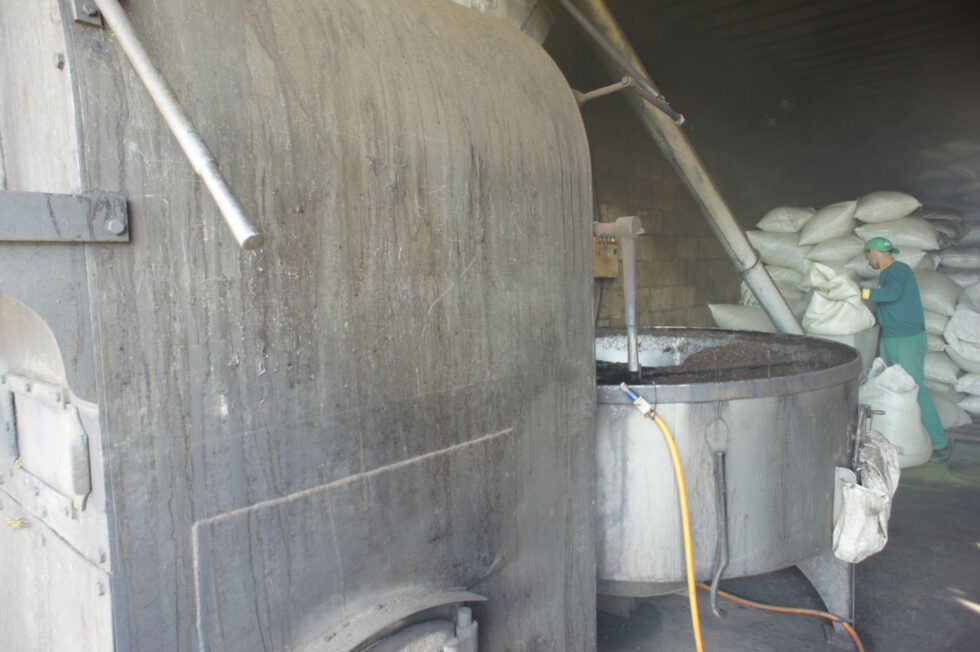
Unlike the numerous conveyer belts that require teams to man the different machines for various steps of the drying process, the roasted mate can be produced by one person

A 50kg sack is emptied into the roasting machine where it then rotates in a drum heated by a fire for about 19 minutes.
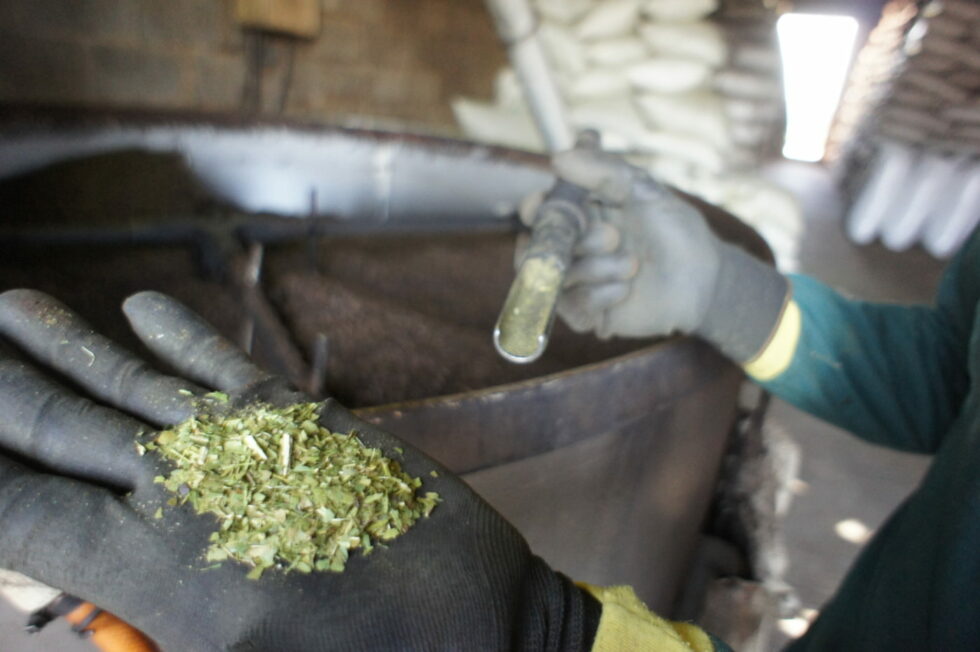
The roasting process is controlled every 5 minutes to ensure that the temperatures are stable by inspecting the color of the leaves

Once the mate is roasted, the cylinder is opened and water is sprayed on the leaves to cool it down (otherwise due to the heat the leaves might set on fire).
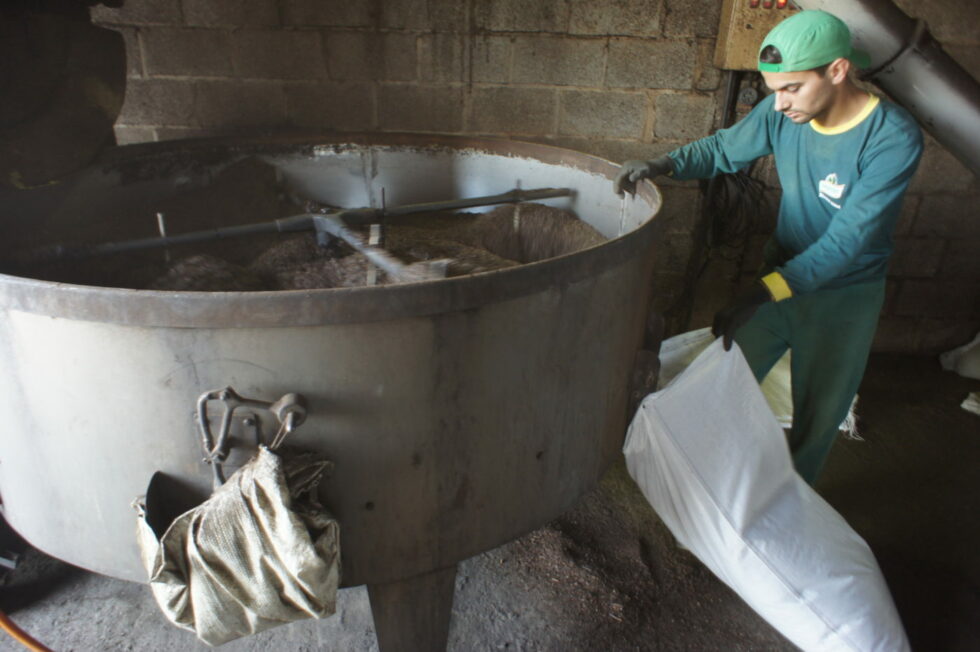
After the leaves cool down they are packed in sacks and stored away until needed.
